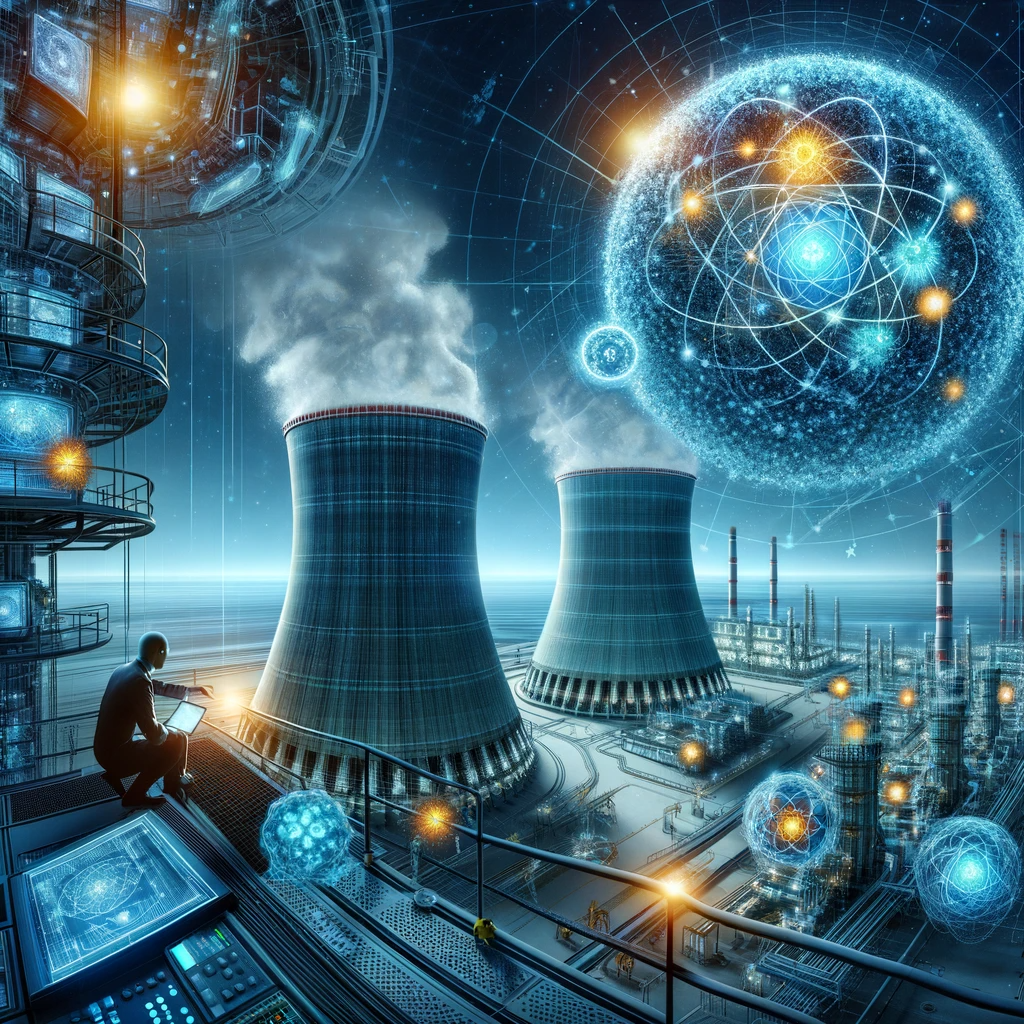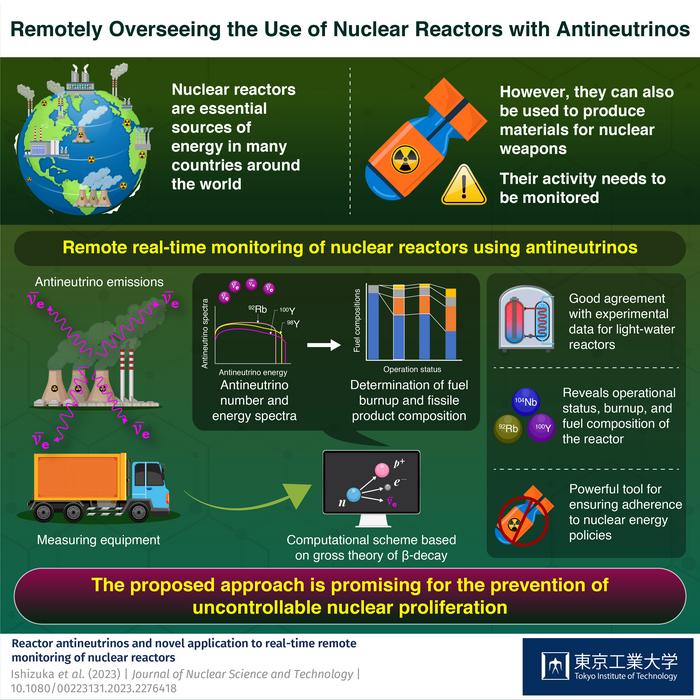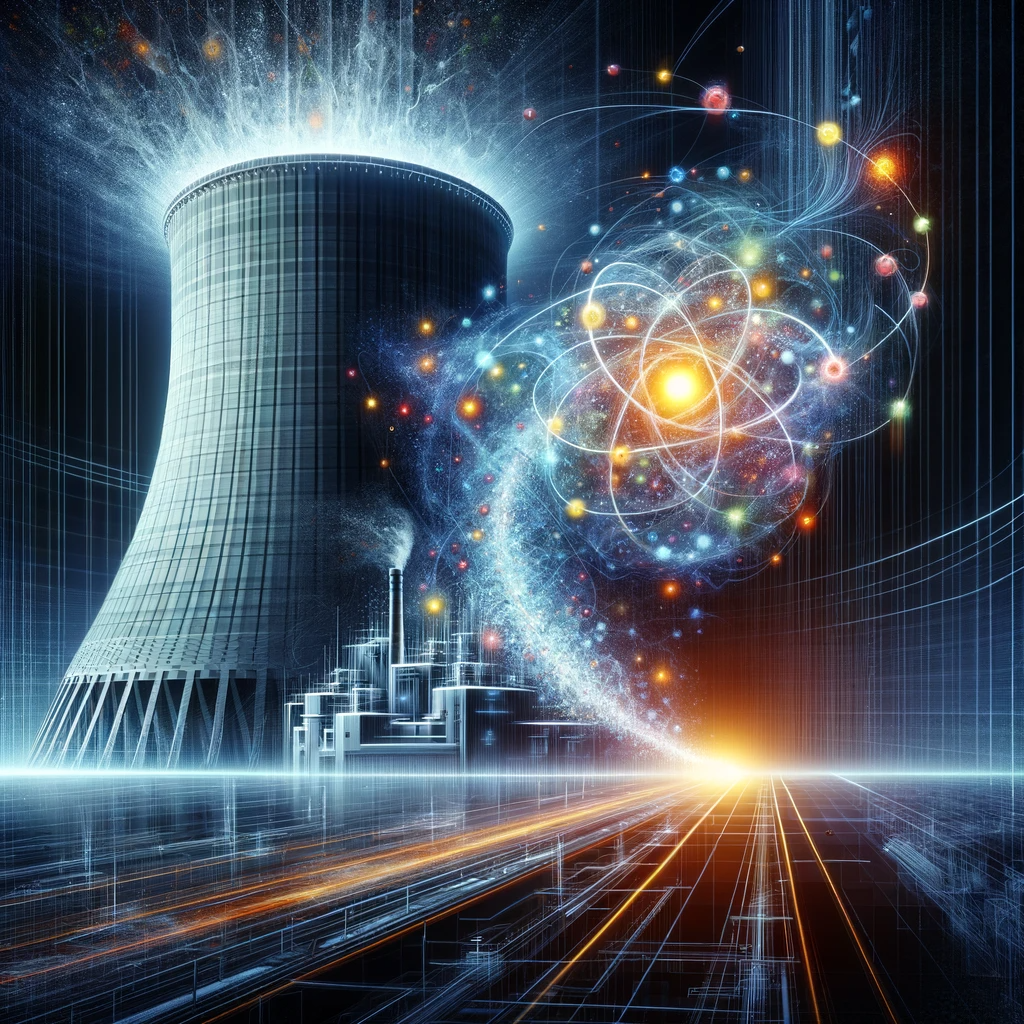From Tokyo Institute of Technology 21/01/24

Nuclear power constitutes an essential source of energy in many countries worldwide, including France, USA, China, and Japan, among others.
While nuclear power plants have less environmental impact than coal power plants with regards to climate change, the technology employed in them can be used for undesirable purposes, namely the production of materials for nuclear weapons.
Thus, nuclear reactors should be closely monitored to ensure that they are not being secretly used to create nuclear warfare.
Against this backdrop, a research team, including Assistant Professor Chikako Ishizuka, Ms. Sasaki Karen, and Professor Sasaki Chiba from Tokyo Institute of Technology in Japan, has been working toward a practical method to remotely monitor the operation of nuclear reactors.
Their paper was published in the Journal of Nuclear Science and Technology on 24 November 2023.
The proposed approach is based around an elusive elementary particle that is generated abundantly during nuclear fission: the antineutrino.

uncontrollable nuclear proliferation.
“Antineutrinos are particles with no electric charge. They interact with materials only via the weak interaction. Thus, their surrounding matter is nearly transparent to them, meaning that antineutrinos generated inside a reactor travel almost freely outside, where they can be detected,” explains Dr. Ishizuka.
“In this manner, reactor antineutrinos can act as potential messengers for conveying information, such as the fissile material composition, to the outside world.”
The researchers first developed a computational scheme to derive the antineutrino spectra that would be emitted in nuclear fission reactions involving 235U, 238U, 239P, and 241P, which are the most common nuclear fuels.
These calculations were based on the gross theory of beta decay, which was developed in the 1960s and refined over several decades, thanks to improvements in measurement techniques and nuclear data libraries.
Notably, these antineutrino spectra represent the aggregate contributions from numerous decaying fission products, which are different for each fuel.
The team then compared the results of their calculations with the fission product yields of three representative nuclear data libraries, finding good agreement.

Based on these favorable results, they proceeded to develop a novel methodology to identify specific fission products in antineutrino spectra measured over several days.
This approach would enable one to remotely estimate the operational status, fuel burnup, and fuel composition, of a nuclear reactor.
Upon further examination using experimental data, the researchers found that their technique worked particularly well for light-water reactors, with slightly higher accuracy for uranium isotopes compared to plutonium ones.
Thus, if this strategy can be refined and practically implemented, it could serve as a foundation for remote monitoring schemes for nuclear reactors.
“Using the approach proposed in this study, it would be possible to confirm whether nuclear reactors are being operated as declared and verify that no undeclared fuel exchanges are taking place during reactor shutdowns,” highlights Dr. Ishizuka.
“It can thus serve as a powerful tool for nuclear non-proliferation by preventing the manufacturing of materials for nuclear weapons in power plants.”
We certainly hope that this work contributes to safer nuclear energy and a world free from the threats of nuclear warfare!



